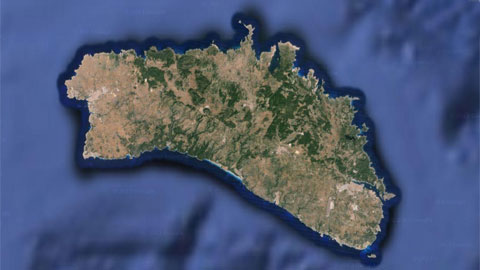Each Menorca tourist generates 14 kg of CO2 daily in energy consumption

03/07/2014
Researchers of the UAB Institute of Environmental Science and Technology (ICTA) for the first time quantified the energy flows and environmental consequences related to mass tourism in Menorca. The research was conducted with the application of social, geographic and environmental tools. The analysis of the 10 most representative tourist areas of the island allowed to observe the trends in energy consumption of different urban patterns, as well as the influence of tourist habits.
The current trend of concentrating tourist services, especially in areas with mass tourism (such as the Mediterranean), demonstrates the importance of environmentally analysing these systems. At the same time, tourist areas show an energy consumption pattern which is concentrated in the summertime and which requires over-dimensioning the supply infrastructure. Moreover, transport plays a relevant role in island tourism, given the geographical isolation of the island. However, the energy metabolism and environmental consequences of tourism in the island's tourist areas had not yet been analysed.
Energy metabolism is modelled in three different stages: external mobility, which includes journeys from the place of residence to the tourist area; internal mobility, which encompasses journeys made while staying at the island; and consumption while staying at their place of accommodation.
Researchers combined different tools for a detailed quantification of energy flows. Based on a questionnaire answered by 754 tourists (between the months of July and August 2010 and 2011), researchers collected the data necessary to calculate both internal and external mobility: the tourist profile (origin, means of transport, duration of their stay), the type of accommodation and the characteristics of internal mobility. A survey conducted with the managers of tourist accommodations made it possible to gather data on the energy consumption in tourist establishments. Next, the environmental profile of the energy flows were quantified using CO2 emission calculation methods. Finally, a map made with geographic information systems (GIS) allowed researchers to calculate the possible amount of electrical energy produced with solar panels.
With all this methodology, researchers concluded that on average a tourist consumes some 4,756 MJ (megajoules) of energy, associated to some 277 kg of CO2 emissions during an approximate stay of 20 days. The energy metabolism depends on the tourist profile (origin, use of public transport, duration of the stay, etc.) and the typology of the tourist area (morphology, services available, etc.). According to the type of tourist area, this amount varies from 4,000 MJ in mixed areas (residences and hotels) to 6,000 MJ in exclusively residential areas. A total of 77% of the energy consumption and CO2 emissions are due to the journey made to reach the island.
Researchers were able to detect that the internal energy consumption of tourist accommodation buildings could be 100% renewable energy if solar panels were installed on the rooftops of these buildings. Residential areas could become self-sufficient year-round, while mixed areas could be self-sufficient some 7 to 10 months a year.
The study presents recommendations on how hotel managers and local authorities could reduce energy consumption, similar to the actions taken by the general population of the island, and to promote energetic self-sufficiency. In addition to making use of solar energy and promoting the energetic efficiency of buildings, they recommend promoting the use of public transport for internal journeys and the need to improve the transport network; the development of environmental communication tools for tourists, such as eco-labelling in establishments; the increase in the number of general stores close to tourist areas, with the aim of reducing trips to and from; as well as the promotion of maritime transport as an alternative to reaching the island.
The study was conducted with the economic support of the Social and Environmental Observatory of Menorca (OBSAM) and the Institute of Menorca Studies (IME).